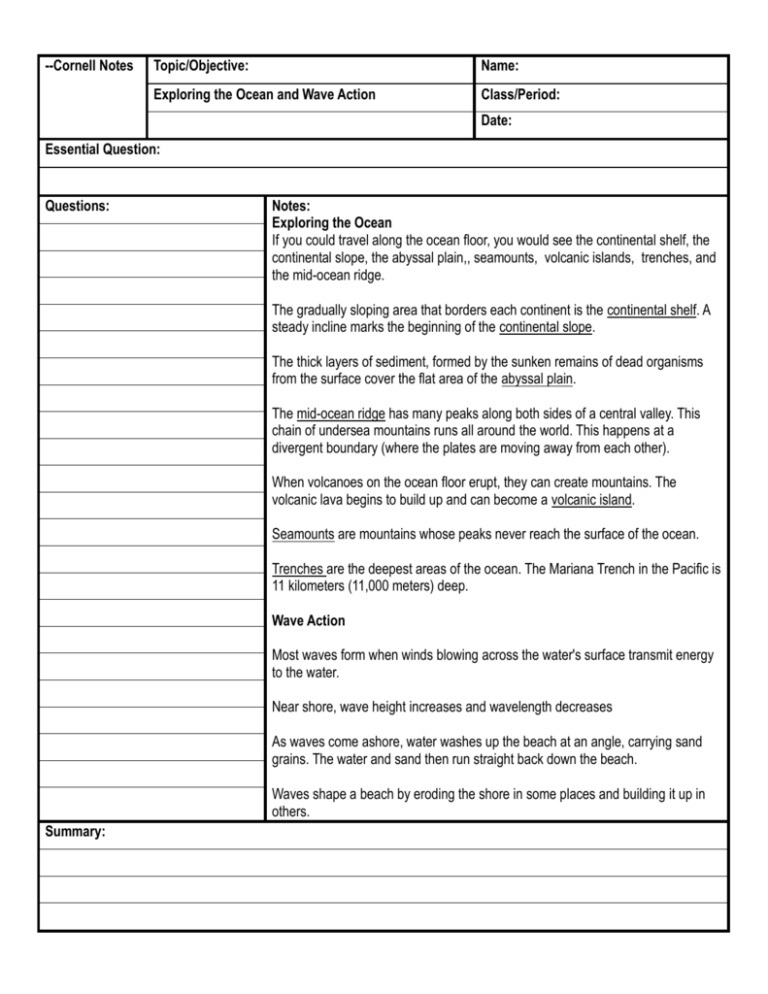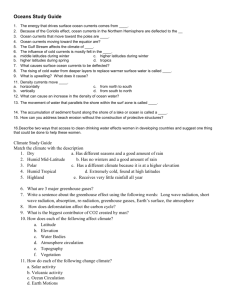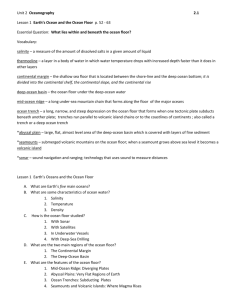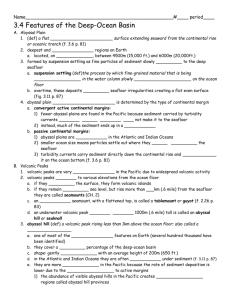Ch. 11 Cornell Notes
advertisement

--Cornell Notes Topic/Objective: Name: Exploring the Ocean and Wave Action Class/Period: Date: Essential Question: Questions: Notes: Exploring the Ocean If you could travel along the ocean floor, you would see the continental shelf, the continental slope, the abyssal plain,, seamounts, volcanic islands, trenches, and the mid-ocean ridge. The gradually sloping area that borders each continent is the continental shelf. A steady incline marks the beginning of the continental slope. The thick layers of sediment, formed by the sunken remains of dead organisms from the surface cover the flat area of the abyssal plain. The mid-ocean ridge has many peaks along both sides of a central valley. This chain of undersea mountains runs all around the world. This happens at a divergent boundary (where the plates are moving away from each other). When volcanoes on the ocean floor erupt, they can create mountains. The volcanic lava begins to build up and can become a volcanic island. Seamounts are mountains whose peaks never reach the surface of the ocean. Trenches are the deepest areas of the ocean. The Mariana Trench in the Pacific is 11 kilometers (11,000 meters) deep. Wave Action Most waves form when winds blowing across the water's surface transmit energy to the water. Near shore, wave height increases and wavelength decreases As waves come ashore, water washes up the beach at an angle, carrying sand grains. The water and sand then run straight back down the beach. Waves shape a beach by eroding the shore in some places and building it up in others. Summary: --Cornell Notes Topic/Objective: Name: Tides, Ocean Water Chemistry, and Currents and Climate Class/Period: Date: Essential Question: Questions: Notes: Tides Tides are caused by the interaction of Earth, the moon, and the sun. Changes in the positions of Earth, the moon, and the sun affects the heights of the tides during a month The movement of huge amounts of water between high and low tides is a source of potential energy. Ocean Water Chemistry On average, one kilogram of ocean water contains about 35 grams of salt Like temperatures on land, temperatures at the surface of the ocean vary with location and the seasons. Gases in ocean water vary as well. As you descend through the ocean, that water temperature decreases. Pressure increases continuously with depth in the ocean. Currents and Climate Surface currents are driven mainly by winds. A surface current warms or cools the air above it, influencing the climate of land near the ocean. Deep currents are caused by differences in the density of ocean water. Deep currents move and mix water around the world. Upwelling brings up tiny ocean organisms, minerals, and other nutrients from the deeper layers of the water. Summary:








